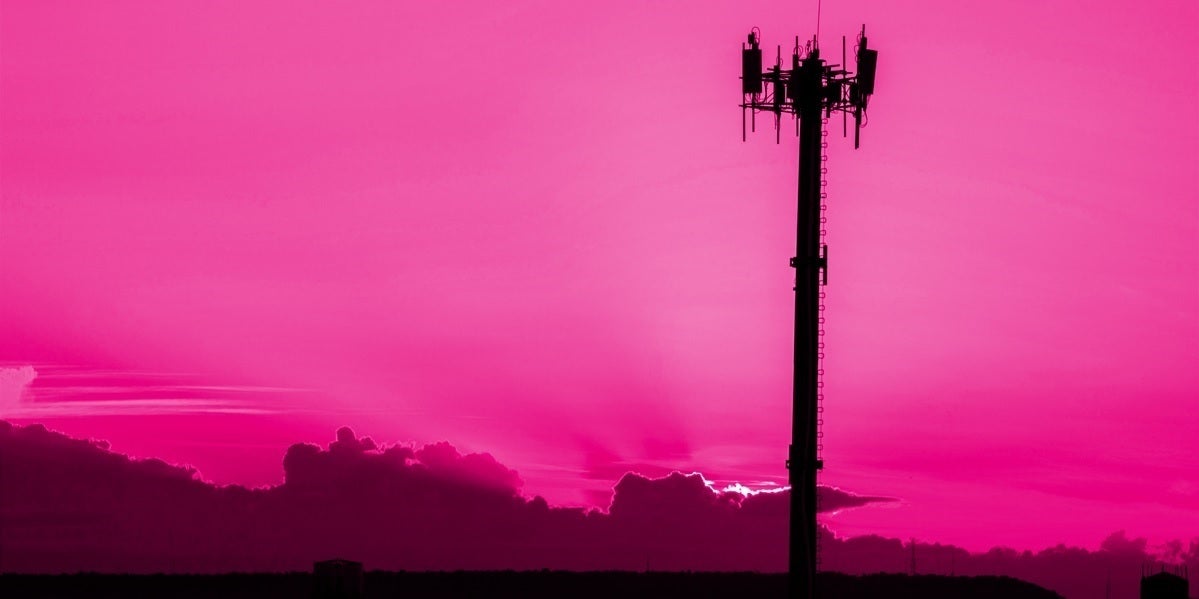FCC to auction off more 2.5GHz mid-band spectrum for 5G use; T-Mobile expected to bid

If there is one reason why T-Mobile is the acknowledged 5G leader in the U.S. during these early days of what will be a long battle for 5G supremacy in the country, it is the 2.5GHZ mid-band spectrum that it acquired when it purchased Sprint for $26 billion. Both AT&T and Verizon made the mistake of trying to dazzle consumers with speed and so they started building out 5G using a zippy high-band mmWave spectrum that could deliver 1Gbps download data speed.
Running across a high-band 5G signal is as rare as finding Mew while playing Pokemon
That might have dazzled some Americans, but not the ones who knew that high-speed data does not travel very far and is easily blocked by trees, houses, and other structures that get in the way. Very few Americans can access mmWave signals, but, many more U.S. smartphone users can lock into T-Mobile's mid-band 5G signal running at an average download data speed of 300Mbps, 7.5 times faster than 4G LTE.

FCC plans to auction off more 2.5GHz mid-band spectrum this July
Last year Verizon and AT&T combined spent $68 billion at an FCC auction to buy C-band licenses giving them mid-band capabilities in the 3.7GHz-3.98GHz range. Some 5G signals in that range can interfere with the altimeters in a commercial aircraft's cockpit which is why Verizon and AT&T have had to refrain from using all of the C-band spectrum it won at auction.
All three major carriers are using some form of low-band spectrum for their nationwide 5G services. That's because low-band signals travel great distances, and are not easily blocked. The major downside is that low-band download speeds are no faster than 4G LTE. If you find yourself hooked up to a 5G network, more often than not it is a low-band signal and at 40Mbps you might be asking yourself what the fuss over 5G is about.
But once you start accessing mid-band 5G signals, you'll see for yourself exactly what the fuss over 5G is all about. And if you're lucky enough to encounter a high-band mmWave connection, congratulations are in order as you got a glimpse of the near future.
According to CNET, FCC chairwoman Jessica Rosenworcel is having her regulatory agency auction off airwaves in the prime 2.5GHz location. And not that T-Mobile is under pressure to add to its mid-band holdings, the word is that it will be bidding in an effort to obtain more 2.5GHz mid-band spectrum in order to enhance its 5G capabilities.
The Democrat spoke during the MWC keynote discussing the importance of getting an early start for the build out of 6G. And Rosenworcel even took a shot at Verizon and AT&T by mentioning how the two carriers shouldn't make the same mistake again by falling in love with the blinding download speeds of mmWave spectrum. For as fast as it is, if no one can ever manage to connect to it, those signals are worthless.
FCC Chairwoman Rosenworcel says not to forget the lessons learned with mmWave
The FCC chairwoman actually phrased it like this. "Let's not forget the lessons we've learned with millimeter wave spectrum and 5G," she said. "These waves are fragile. And while there's a lot of this spectrum to deploy, it doesn't travel very far, and right now deploying it is awfully costly."
Rosenworcel also talked about 6G and mid-band. She wants to start identifying where there is mid-band coverage now that can support faster speeds and wider coverage when the 6G build out begins. And she says that it is not too early to do this. "We've got to learn from what came before and recognize that emerging technology ... benefits from a little advance planning," she said.
The U.S. already feels a bit on the attack when it comes to 6G. That's because China owns 40% of the world's 6G patents with the U.S. next with 35%
Follow us on Google News












Things that are NOT allowed:
To help keep our community safe and free from spam, we apply temporary limits to newly created accounts: